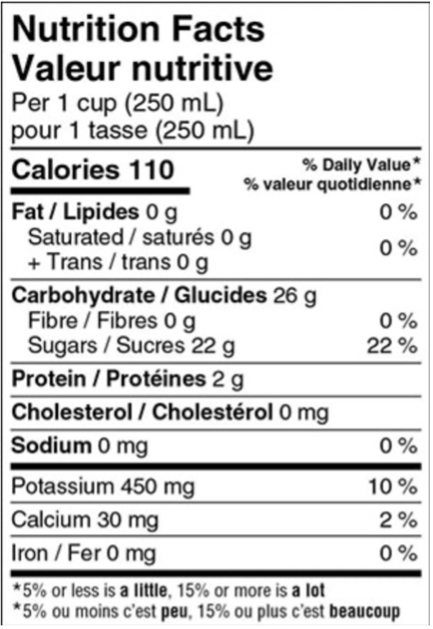Carbs: Type and Quality

Summary
Types of carbohydrates: Sugars, Starches, Fibre
How do we use carbs: Provide energy instantly or store it for later use
How Much to eat: Generally consume at least 130g of carbohydrates per day, which should make up 45-65% of total calories. This may vary in some cases.
Not all carbohydrates are equal. Higher quality carbohydrates are found in whole fruits, some vegetables, whole grains, beans, and legumes. Read more here
Best Sources: carbohydrates in its natural form and fibre rich
Minimize: processed foods with refined carbs and higher amounts of sugar
RxFood Activity: you can look at your whole and refined grain, vegetable and fruit intake
Tips for selecting high quality carbohydrates:
Look for whole wheat, whole rye, or other whole grains on the ingredient list
Try for whole fruit instead of fruit juice
Check the amount of sugar on the label, and aim for products with lower percent daily values (ideally 5% or less) for sugar
Consider a continuous glucose monitor (CGM) to see how you respond to certain foods, activities, sleep (or lack of) and more. You can connect your RxFood application to a Dexcom CGM. Learn more here.
CGM with RxFood
Details
Starches: these carbohydrates are usually considered complex. They are found in legumes, beans, fruits, whole grains, and starchy vegetables like potatoes, lima beans, peas and corn.
Fibre is an important complex carbohydrate that your body cannot break down. Fibre is further divided into two types: soluble and insoluble. Foods can contain one or both types of fibre.
Soluble fibre absorbs water and slows the absorption of glucose and cholesterol from the GI tract into the body. Examples of soluble fibre foods include psyllium, oats, nuts, seeds, beans, lentils, peas, and some fruits and vegetables.
Insoluble fibre creates bulk in the GI tract hence helping with bowel movements. Examples of insoluble fibre include wheat brain, whole grains, and vegetables.
Sugars are either naturally occurring, such as that found in milk, fruit, or added sugars in cereals, juice, soda, baked goods, etc.
Glycemic index (GI) is a numerical scale that ranks carbohydrates in foods based on their potential to raise glucose levels. A lower number will raise glucose less. Aim for more lower GI foods. You can read more here.
Takeaway 1: Higher quality carbohydrates will increase glucose more gradually. Sometimes (when your glucose levels are low), sugars may be preferred to increase glucose rapidly. But even then, adding a complex carbohydrate will help maintain glucose levels after the sugar.
Takeaway 2: try to increase carbohydrates that have more fibre (e.g. 4 grams or more per serving).
Takeaway 3: try to minimize sugars
Reading Carbohydrates on food labels
Food labels include carbohydrates (total), fibre and sugars. Some labels may break down natural and added sugars. Note, starches are not listed on the label. To estimate starches, subtract fibre and sugars from the total carbohydrates. Net carbohydrates are determined by subtracting fibre from total carbohydrates. In the example below, starches are 4 grams, fibre 0 grams, sugars 22 grams. Net carbs would be 26 grams since there is no fibre.
Picking a Bread
Different types of bread products may further impact glucose response. For example, sourdough bread can vary depending on the product. Fermentation that occurs in the production of sourdough bread can reduce the simple sugars, and sometimes these breads may contain probiotic strains that can potential slow glucose response. This may result in a better glucose response. Sprouted breads may also result in more stable glucose changes too.
About Oatmeal
Oatmeal is a great food, but the type and how it is prepared can make a major difference on glucose response. For example, steel cut oats are recommended. Quick oats and instant oats may break down easier and impact glucose more. Similarly, what you add to the oatmeal can impact glucose response. Many types of instant oatmeal have lots of sugar added that can cause increases. Adding berries, chia seeds, nuts, hemp hearts, or even plain greek yogurt to your oatmeal can help with glucose response.
Other potentially higher refined carbs/higher GI foods to be mindful of and some suggestions to modify
Sushi may have lots of white rice so try to mix in sashimi and not just rolls
Heavy noodle dishes can have lots of carbs so try and add in more protein and vegetables when you can
Donuts and muffins can have lots of refined carbohydrates. If you are able to make your own, consider using nut or legume flour (for at least part of the recipe) and replace sugar with apple sauce
Pizza can have a lot of refined carbohydrates. Consider trying thin crust or cauliflower crust pizzas and add lots of vegetables/lean proteins on top
Bagels can have large amounts of carbohydrates and can be quite dense. Consider having half a bagel and adding in more protein, nut butters, salmon, etc or try other types of breads that are less dense
Cereal
Smoothies and smoothie bowls, depending on what is in them, may have lots of fruit and due to the blending process be absorbed faster. Try adding in vegetables, nuts, seeds, plain Greek yogurt, protein, hemp hearts, etc. to balance these


